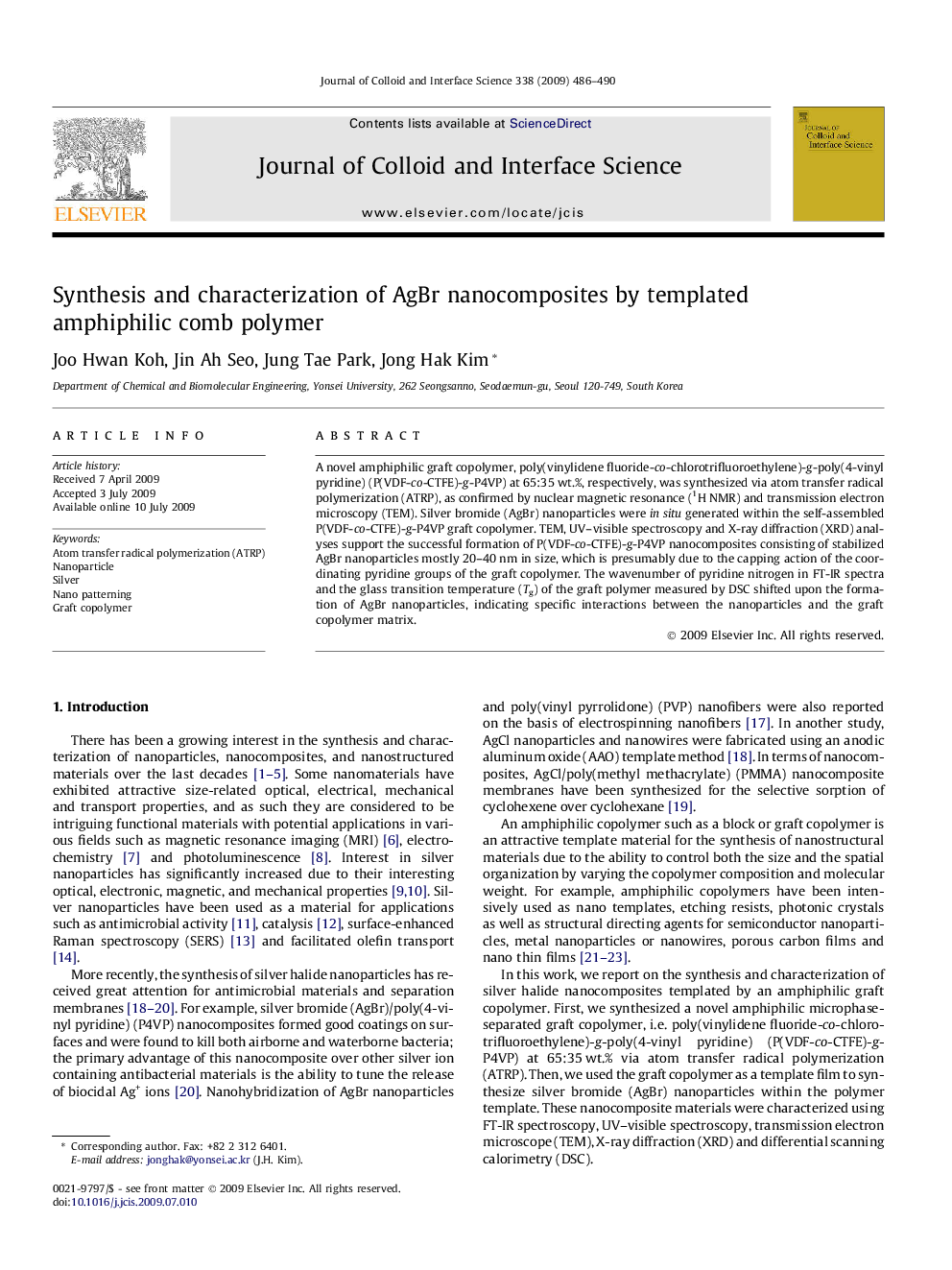| Article ID | Journal | Published Year | Pages | File Type |
|---|---|---|---|---|
| 610459 | Journal of Colloid and Interface Science | 2009 | 5 Pages |
A novel amphiphilic graft copolymer, poly(vinylidene fluoride-co-chlorotrifluoroethylene)-g-poly(4-vinyl pyridine) (P(VDF-co-CTFE)-g-P4VP) at 65:35 wt.%, respectively, was synthesized via atom transfer radical polymerization (ATRP), as confirmed by nuclear magnetic resonance (1H NMR) and transmission electron microscopy (TEM). Silver bromide (AgBr) nanoparticles were in situ generated within the self-assembled P(VDF-co-CTFE)-g-P4VP graft copolymer. TEM, UV–visible spectroscopy and X-ray diffraction (XRD) analyses support the successful formation of P(VDF-co-CTFE)-g-P4VP nanocomposites consisting of stabilized AgBr nanoparticles mostly 20–40 nm in size, which is presumably due to the capping action of the coordinating pyridine groups of the graft copolymer. The wavenumber of pyridine nitrogen in FT-IR spectra and the glass transition temperature (Tg) of the graft polymer measured by DSC shifted upon the formation of AgBr nanoparticles, indicating specific interactions between the nanoparticles and the graft copolymer matrix.
Graphical abstractA novel amphiphilic graft copolymer, i.e. poly(vinylidene fluoride-co-chlorotrifluoroethylene)-g-poly(4-vinyl pyridine) (P(VDF-co-CTFE)-g-P4VP) was synthesized via atom transfer radical polymerization (ATRP) and silver halide nanoparticles were in situ generated within the graft copolymer.Figure optionsDownload full-size imageDownload as PowerPoint slide
